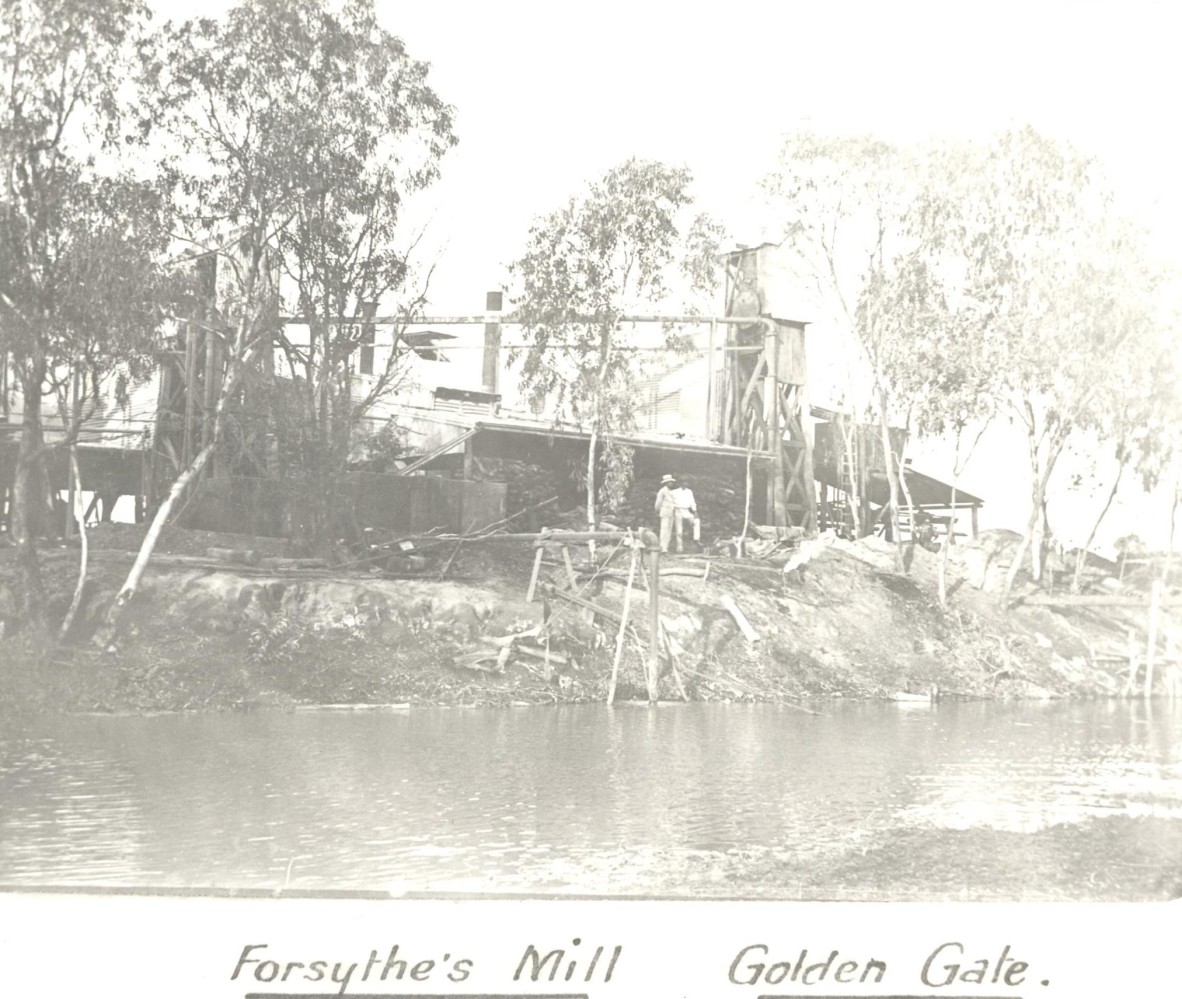
The town of Golden Gate developed late in the period of the Croydon gold rush, but once it was surveyed and settled, it was to become one of the area’s most important centres. Golden Gate was officially surveyed on 11 April 1893, however some buildings were already in place by that time.
The first Golden Gate mine had been taken up by Joseph Hardy and James Fulton in 1886. The Normanton to Croydon railway line reached Golden Gate in 1891 and a railway station was constructed, but was later moved a little over a mile to the west in 1892. Golden Gate’s population was to grow rapidly during its early period, peaking in around 1900. By this time, Golden Gate’s six hundred residents supported a number of hotels including the Railway, the Commercial, the Australian, the Welcome, the Exchange, the International, Tattersalls and the Golden Gate.
There were also eight stores, including a baker, a newsagency and tobacconist, a barber and billiards room, three butchers and a drapery. In addition there were three churches as well as a school, which operated from 1896 to 1921. A post office, opened in 1891, continued until 1919 when it was closed. By 1922 however, mining yields had declined to the point where further large scale mining was no longer viable. At this time, Forsyth’s Pioneer Mill closed down, effectively ending the town’s economic and commercial prospects.
As is the case with many similar mining based towns, there are remains of the town and the surrounding mining operations able to still be seen. As well, intermittent efforts have been made to reopen some mining operations in the hope that more modern methods of mining and processing will produce commercial yields. However, as with other places, this has met with limited success.
This image, dating from 1904, shows Forsyth’s mill and crushing works, when it was till a viable mining operation. We can speculate that one of the figures posed in front of the building may be Forsyth himself.
Brian Randall - Queensland Places Coordinator, State Library of Queensland.
Comments
Your email address will not be published.
We welcome relevant, respectful comments.